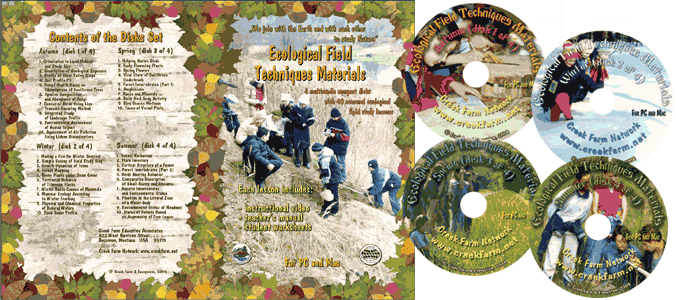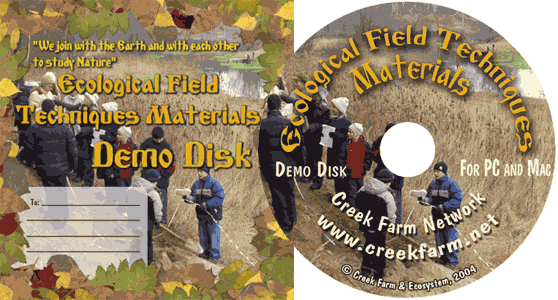|
| Our Field Ecology Center published more than
180 methodical materials for nature studies. Some of them are in English: |
|
|
|
Assessment of the Vital State of Coniferous Underbrush
© Alexsander S. Bogolyubov,
Russia, 2001
© Michael J. Brody, USA,
2003
 This manual describes the study of the growth
for coniferous tree underbrush in different types of forest plant associations. It
explains the selection of biotopes for study, a procedure for measuring height and age of
young trees, primary processing of measurement data and plotting graphs explaining growth
success level and vital state of the underbrush. This manual describes the study of the growth
for coniferous tree underbrush in different types of forest plant associations. It
explains the selection of biotopes for study, a procedure for measuring height and age of
young trees, primary processing of measurement data and plotting graphs explaining growth
success level and vital state of the underbrush.
This field study has instructional video
featuring real students conducting the ecological field techniques in nature. Each video
illustrates the primary instructional outcomes and the major steps in accomplishing the
task including reporting the results.
Introduction
It is known that the rate of reforestation depends on a number of factors, first
of all, on availability of seed and the physical properties of the environment.
Seeds of most coniferous tree species are disseminated by the wind. When seeds fall
into forest litter (debris layer) under favorable conditions, they can germinate and
sprout. If the specific tree species can later become the main forest layer, then such
sprouts are called underbrush (or youth growth) from the moment of their
appearance. It is widely accepted that young trees can be called underbrush until they
reach 1/3 of the height of the main forest canopy.
Unlike the underbrush, trees and bushes that cannot become the main forest canopy later
due to their biological features, i.e. to form a full-value forest stand are called underwood
(understory).
A typical example of underbrush in a pine-spruce forest can be young spruces, pines
and birches, whereas underwood is composed of willows, mountain ash, buckthorn,
raspberry, etc.
The rate of underbrush growth depends on a number of factors, first of all, on the physical
conditions of the habitat: moisture, temperature and light conditions, soil richness,
diseases and insects/pests. It is practically impossible to take into account all of these
factors. However, it is possible to measure the role of all the factors in the aggregate
by assessing the success of growth or vital state of the underbrush under natural
conditions.
This lesson is aimed at the assessment of the underbrush growth successfulness on the
example of one of the most abundant coniferous tree species found in your area. Coniferous
trees were chosen as objects for study as it is easy to determine the age of young trees
of most coniferous species according to their appearance. It is almost impossible to
conduct the same study based on deciduous trees or shrubs.
Students will need a minimum of equipment to complete the lesson: a two-meter measuring
tape or a pole of 3-4 meters long, which is divided into decimeters, as well as a field
diary to record the measurement data.
Selection of biotopes for study
Objectives of the study include taking measurements of the height and age of young
coniferous trees under different growth conditions. Depending on the chosen tree species
(let us remember that is should be an abundant species in your area), students perform an
approximate assessment of its population size in different biotopes. In compliance with
the standard rules for the present study (one or two days by a group of 10-11 students),
it is recommended to choose 3-5 different biotopes where underbrush consisting of young
trees of the chosen species is found.
Norway (common) spruce is the most widespread and suitable species for study in the
conditions of the central part of Russia (in the vicinity of the field studies center
УEcosystemФ). The biotopes where that species regenerates more or less successfully
include a spruce forest; mixed coniferous and deciduous forest, pine forests and
small-leafed forests (a birch forest and birch-pine forest). You can choose
another model species in different biotopes in other areas.
Organization of fieldwork
Before the field part of the work, a group of students is divided into teams (working
groups) according to the number of biotopes under study (in our case, into four ...
This was only the first page from the manual and its full version you can see in the
Ecological Field Studies Techniques Video 4CD Set:
It is possible to purchase the complete set of 40 seasonal Ecological Field
Studies Techniques Video (in mpg format) in an attractive 4 compact disk set.
These compact disks are compatible with Mac and PC computers.
The videos are suitable for individual student or whole class instruction. To purchase the complete 4CD set
write to ecosystema1994@yandex.ru in a free form.

Ecological Field Studies Demo Disk:
We also have a free and interesting demonstration disk that explains our ecological field studies approach.
The demo disk has short excerpts from all the seasonal field study videos as well as sample text from all the teacher manuals.
The disk has an entertaining automatic walk through which describes the field study approach and explains how field studies meet education standards.
You can also download the Demo Disc from ecosystema.ru/eng/eftm/CD_Demo.iso.
This is a virtual hybrid (for PC and Mac computers) CD-ROM image (one 563 Mb file "CD_Demo.iso").
You can write this image to the CD and use it in your computer in ordinary way.
You also can use emulator software of virtual CD-ROM drive to play the disk directly from your hard disk.

|







